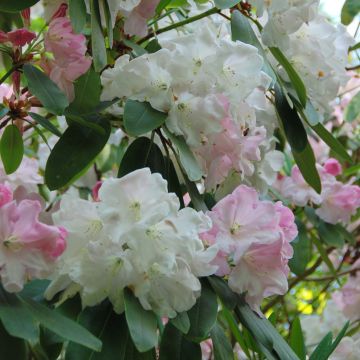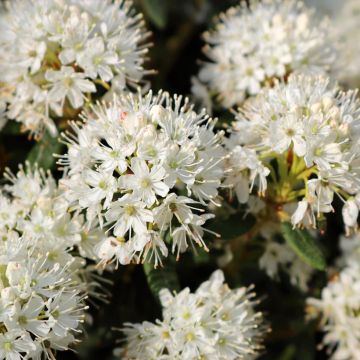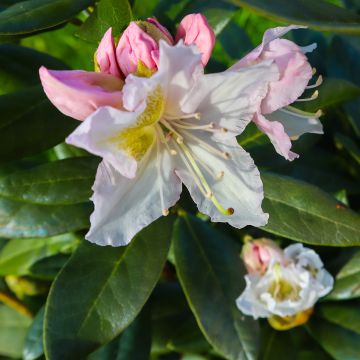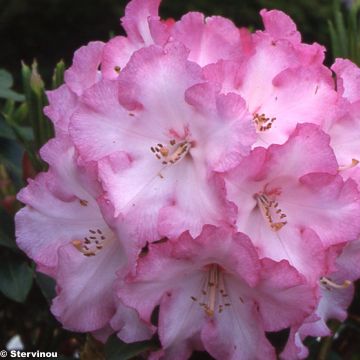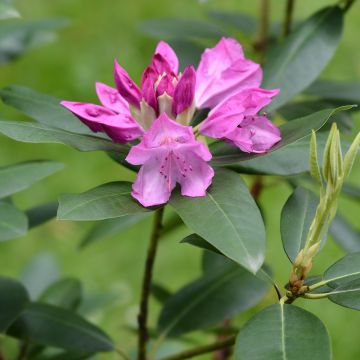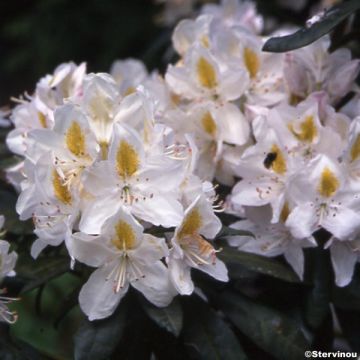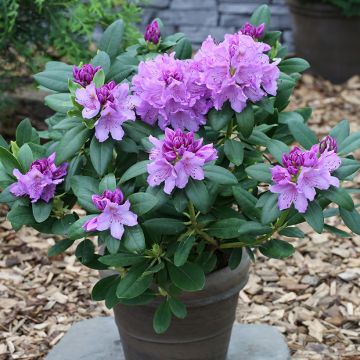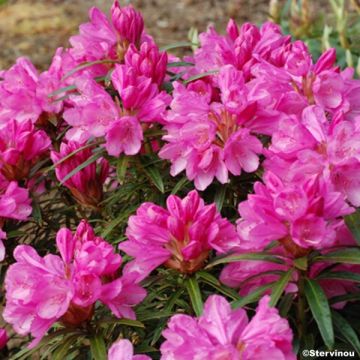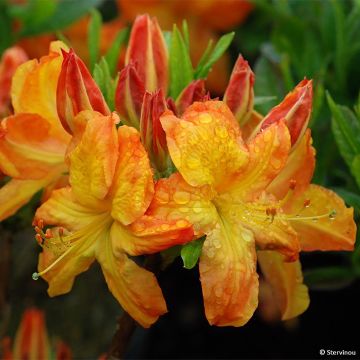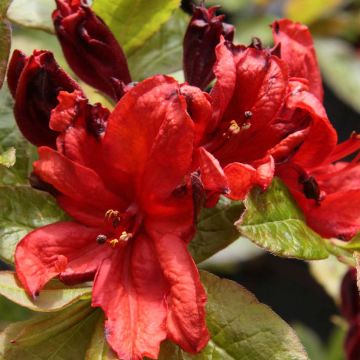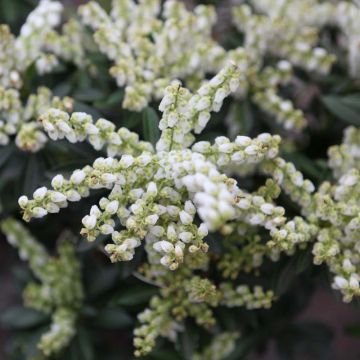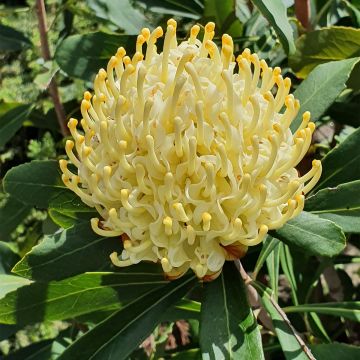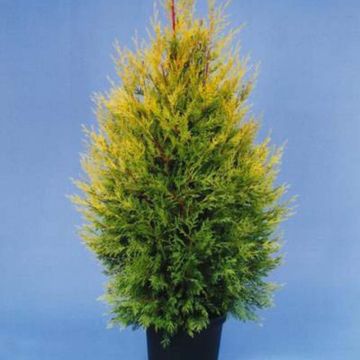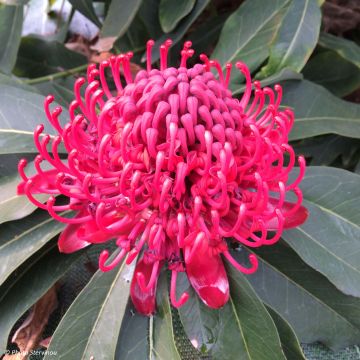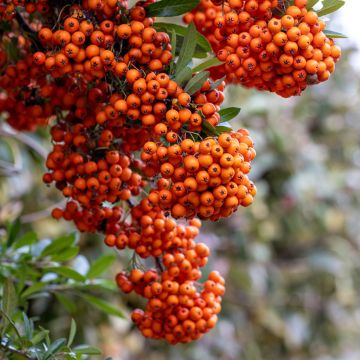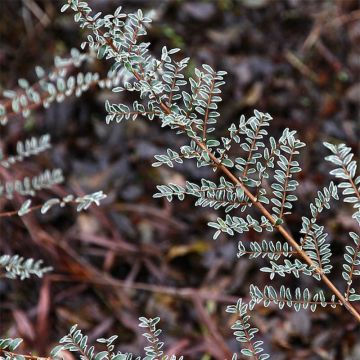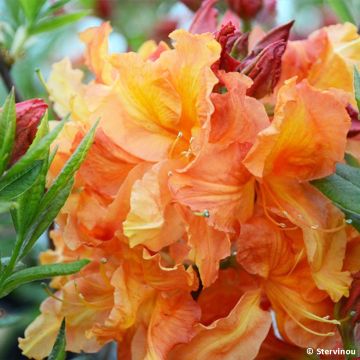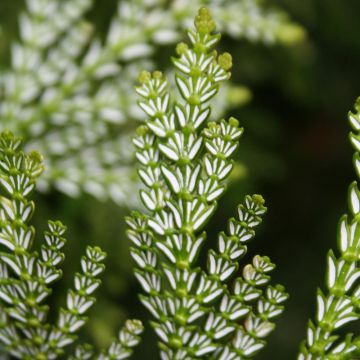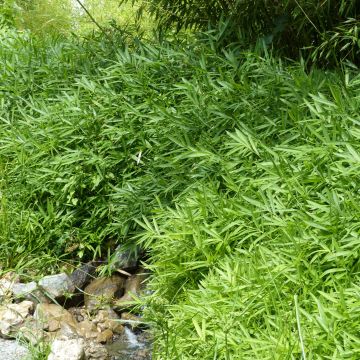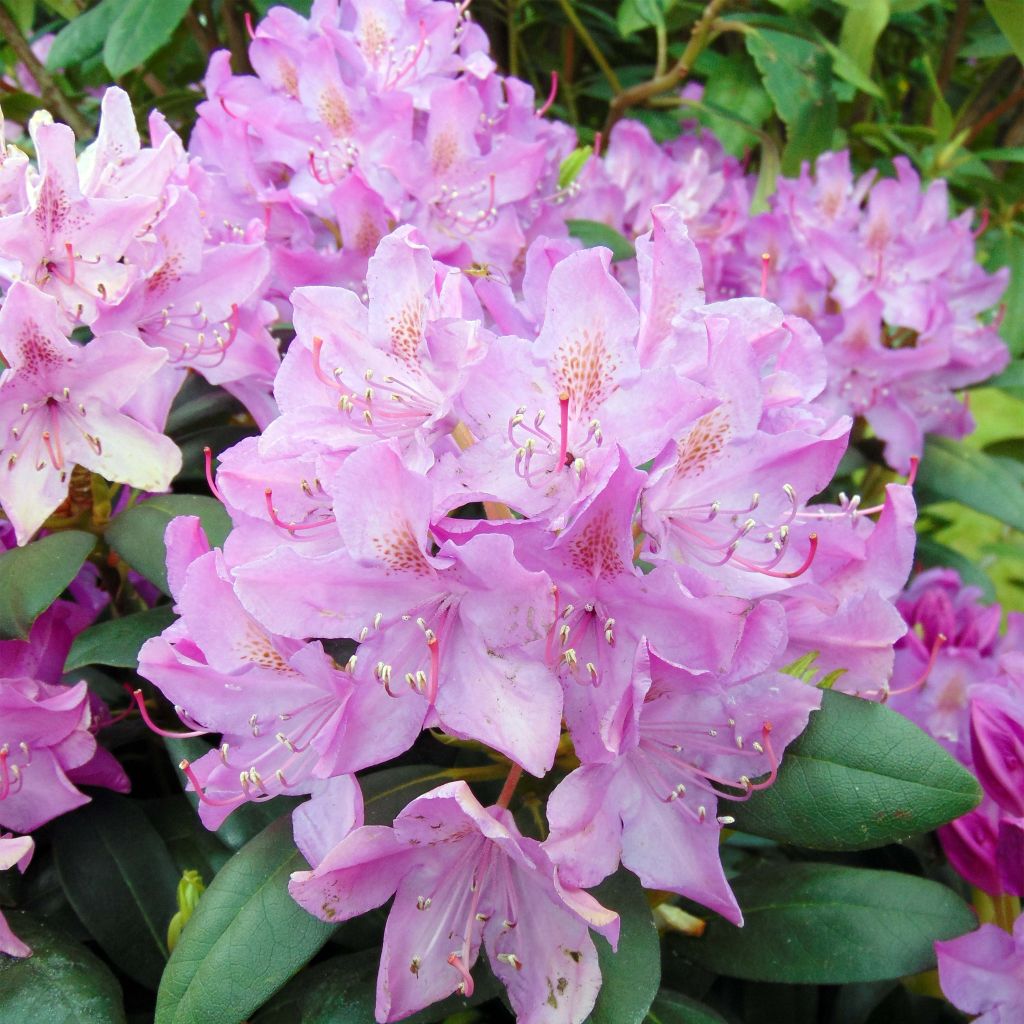

Rhododendron catawbiense Roseum Elegans
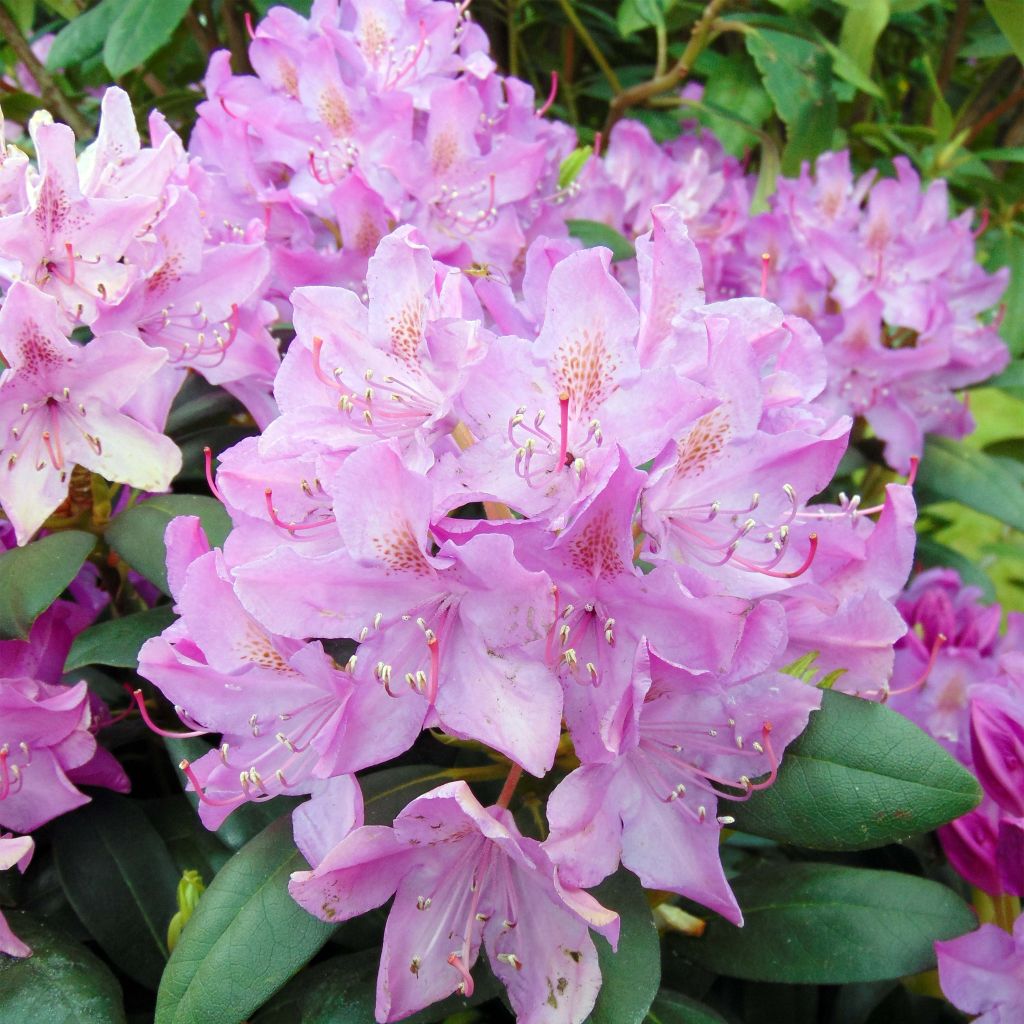

Rhododendron catawbiense Roseum Elegans
Rhododendron catawbiense Roseum Elegans
Rhododendron x catawbiense Roseum Elegans
Rhododendron, Mountain Rosebay
This item cannot be shipped to the selected country
Delivery charge from €5.90
Delivery charge from €5.90
More information
Schedule delivery date,
and select date in basket
This plant carries a 24 months recovery warranty
More information
We guarantee the quality of our plants for a full growing cycle, and will replace at our expense any plant that fails to recover under normal climatic and planting conditions.
From €5.90 for pickup delivery and €6.90 for home delivery
Express home delivery from €8.90.
From €5.90 for pickup delivery and €6.90 for home delivery
Express home delivery from €8.90.

Does this plant fit my garden?
Set up your Plantfit profile →
Description
Rhododendron catawbiense 'Roseum Elegans' is a vigorous and tall bush, with good cold resistance, but also heat resistance, a quality not so common in these plants. Derived from a particularly robust American botanical species, it fascinates in spring, when it almost disappears under a massive flowering of lavender-pink colour enhanced with bronze-red speckles on the throat. Gathered in generous clusters, its large flowers fade to pink over time, creating an inflorescence in a range of pink and mauve. With its lush appearance that could almost be described as exotic, this large "rhodo" allows for the creation of superb screens at the back of flower beds or majestic evergreen hedges.
Rhododendrons are plants of the Ericaceae family, just like heathers, preferring mostly limestone-free soils, with an acidic tendency, and humid climates. Rhododendron catawbiense is a botanical species with great development originating from the USA, more precisely from the mountain slopes of the southern Appalachians, which extend from Virginia to Georgia. It is characterized by remarkable resistance to cold and diseases that can affect these bushes. Frequently planted in American gardens, it has been hybridized with less hardy species from the Himalayas to produce some of our most spectacular rhododendrons.
'Roseum Elegans' is in the same vein as 'Grandiflorum', although its development is slightly less important. It forms a large bush with a slightly spreading rounded habit, as wide as it is tall. Its growth is relatively fast, reaching an average of 2m (6ft 7in) in all directions (sometimes up to 2.50m (8ft 2in) in width) under good conditions. The branches are abundantly covered with beautiful glossy foliage of dark olive green, composed of narrow, slightly arched, oblong-shaped evergreen leaves. The remarkably abundant flowering takes place from the end of May to mid-June. The large funnel-shaped flowers are gathered in large spherical clusters, containing up to 20 funnel-shaped flowers. The colour of the flowers when they bloom is a lavender-pink washed with fuchsia and speckled with red in the centre. Over time, they take on a more mauve hue and reveal a throat speckled with bronze occupied by long, curved stamens of deep pink colour. This heathland bush will find its place in partial shade in a cool, humus-rich, well-drained acidic soil. Rhododendron catawbiense 'Roseum Elegans' is hardy across a wide climatic range.
Rhododendron catawbiense 'Roseum Elegans' can be used as a solitary plant or in mass plantings, obviously in the company of other heathland plants. It can be associated with narrow and conical conifers for contrast of silhouettes, Chinese azaleas, complementing and tempering their warm tones, magnolias, Andromedas (Pieris), mountain laurels (Kalmia), Japanese maples with green or purple foliage... In a large garden in Brittany or Normandy, it can even compose a majestic hedge along a large alley, along with other large rhododendrons.
Rhododendron catawbiense 'Roseum Elegans' is a vigorous and tall bush, with good cold resistance, but also heat resistance, a quality not so common in these plants. Derived from a particularly robust American botanical species, it fascinates in spring, when it almost disappears under a massive flowering of lavender-pink colour enhanced with bronze-red speckles on the throat. Gathered in generous clusters, its large flowers fade to pink over time, creating an inflorescence in a range of pink and mauve. With its lush appearance that could almost be described as exotic, this large "rhodo" allows for the creation of superb screens at the back of flower beds or majestic evergreen hedges.
Rhododendrons are plants of the heath family, just like heathers, preferring mostly limestone-free soils, with an acidic tendency, and humid climates. Rhododendron catawbiense is a botanical species with great development originating from the USA, more precisely from the mountain slopes of the southern Appalachians, which extend from Virginia to Georgia. It is characterized by remarkable resistance to cold and diseases that can affect these bushes. Frequently planted in American gardens, it has been hybridized with less hardy species from the Himalayas to produce some of our most spectacular rhododendrons.
'Roseum Elegans' is in the same vein as 'Grandiflorum', although its development is slightly less important. It forms a large bush with a slightly spreading rounded habit, as wide as it is tall. Its growth is relatively fast, reaching an average of 2m (6ft 7in) in all directions (sometimes up to 2.50m (8ft 2in) in width) under good conditions. The branches are abundantly covered with beautiful glossy foliage of dark olive green, composed of narrow, slightly arched, oblong-shaped evergreen leaves. The remarkably abundant flowering takes place from the end of May to mid-June. The large funnel-shaped flowers are gathered in large spherical clusters, containing up to 20 funnel-shaped flowers. The colour of the flowers when they bloom is a lavender-pink washed with fuchsia and speckled with red in the centre. Over time, they take on a more mauve hue and reveal a throat speckled with bronze occupied by long, curved stamens of deep pink colour. This heathland bush will find its place in partial shade in a cool, humus-rich, well-drained acidic soil. Rhododendron catawbiense 'Roseum Elegans' is hardy across many climatic zones.
Report an error about the product description
Rhododendron catawbiense Roseum Elegans in pictures
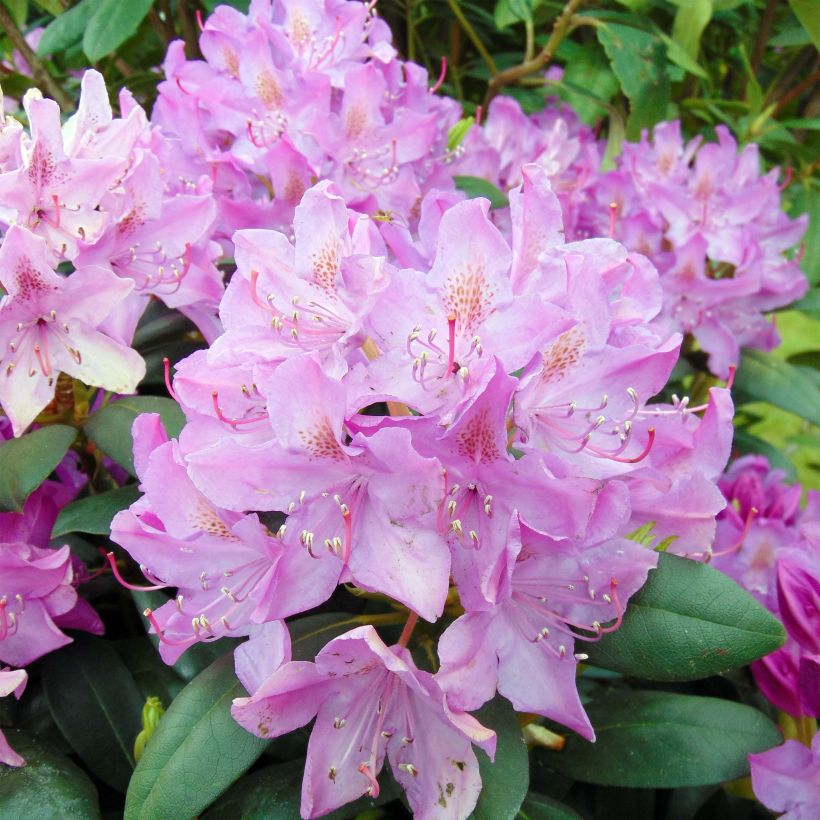

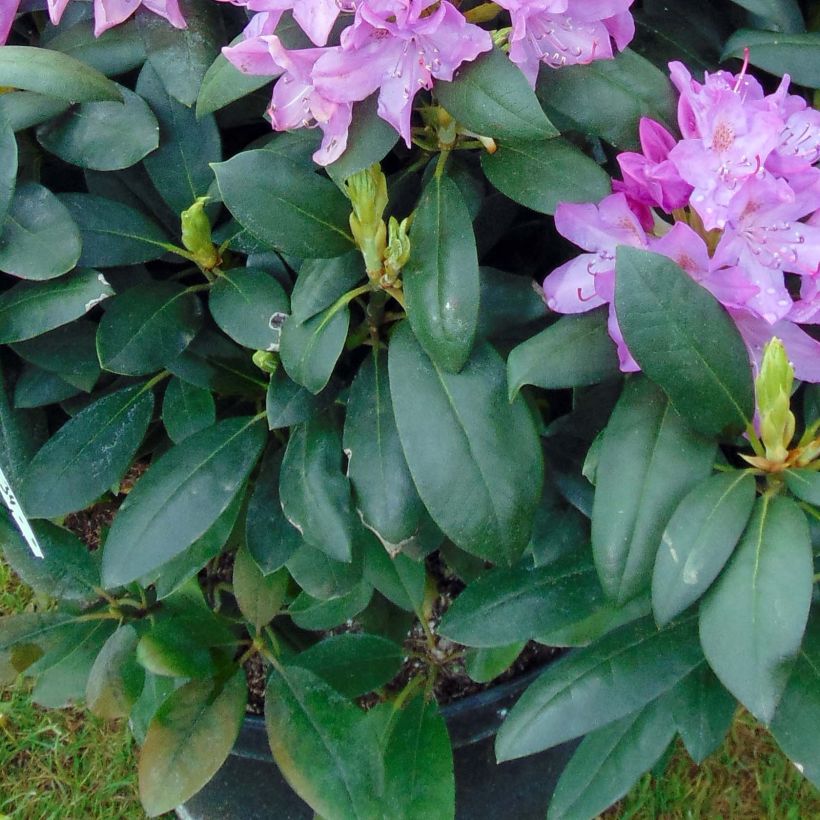

Plant habit
Flowering
Foliage
Botanical data
Rhododendron
x catawbiense
Roseum Elegans
Ericaceae
Rhododendron, Mountain Rosebay
Cultivar or hybrid
Other Large Rhododendrons
Planting and care
Plant Rhododendron catawbiense 'Roseum Elegans' in partial shade, protected from cold and drying winds, in a fresh, humus-rich and light soil with an acidic tendency. Like all plants of the heath family, it does not tolerate limestone or alkaline soils, nor heavy soils saturated with water in winter. Dig a hole three times larger than the pot. Soak the root ball in non-limestone water and plant the bush at the collar level, in a mixture composed of 1/4 turf, leaf compost, gravel or pumice, and loam. Water generously and keep the soil moist in summer.
Azaleas and Rhododendrons have a shallow root system. Consequently, they fear long periods of drought. This is why a humus-enriched soil and abundant watering during dry periods are recommended. In addition, this root system is not very strong, which is why it is essential to lighten heavy soils with draining materials (gravel, pumice, clay balls) when planting. Place a mulch of shredded pine bark at the base of the bush every spring to keep the soil cool while maintaining an acidic pH.
Maintenance consists of cutting off faded flowers in summer and cleaning the bush of dead branches. Azaleas and Rhododendrons can sometimes be attacked by weevils that eat the edges of leaves and rootlets, as well as by the famous "rhododendron beetle" which does not often cause significant damage. However, you can treat it with carbofuran. Yellowing of leaves (chlorosis) in Rhododendrons indicates poor assimilation of iron in the soil and causes premature death of the plant. While limestone is often the cause, poorly drained soil or a deeply planted root ball can also explain the phenomenon.
Planting period
Intended location
Care
-
, onOrder confirmed
Reply from on Promesse de fleurs
Evergreen shrubs
Haven't found what you were looking for?
Hardiness is the lowest winter temperature a plant can endure without suffering serious damage or even dying. However, hardiness is affected by location (a sheltered area, such as a patio), protection (winter cover) and soil type (hardiness is improved by well-drained soil).

Photo Sharing Terms & Conditions
In order to encourage gardeners to interact and share their experiences, Promesse de fleurs offers various media enabling content to be uploaded onto its Site - in particular via the ‘Photo sharing’ module.
The User agrees to refrain from:
- Posting any content that is illegal, prejudicial, insulting, racist, inciteful to hatred, revisionist, contrary to public decency, that infringes on privacy or on the privacy rights of third parties, in particular the publicity rights of persons and goods, intellectual property rights, or the right to privacy.
- Submitting content on behalf of a third party;
- Impersonate the identity of a third party and/or publish any personal information about a third party;
In general, the User undertakes to refrain from any unethical behaviour.
All Content (in particular text, comments, files, images, photos, videos, creative works, etc.), which may be subject to property or intellectual property rights, image or other private rights, shall remain the property of the User, subject to the limited rights granted by the terms of the licence granted by Promesse de fleurs as stated below. Users are at liberty to publish or not to publish such Content on the Site, notably via the ‘Photo Sharing’ facility, and accept that this Content shall be made public and freely accessible, notably on the Internet.
Users further acknowledge, undertake to have ,and guarantee that they hold all necessary rights and permissions to publish such material on the Site, in particular with regard to the legislation in force pertaining to any privacy, property, intellectual property, image, or contractual rights, or rights of any other nature. By publishing such Content on the Site, Users acknowledge accepting full liability as publishers of the Content within the meaning of the law, and grant Promesse de fleurs, free of charge, an inclusive, worldwide licence for the said Content for the entire duration of its publication, including all reproduction, representation, up/downloading, displaying, performing, transmission, and storage rights.
Users also grant permission for their name to be linked to the Content and accept that this link may not always be made available.
By engaging in posting material, Users consent to their Content becoming automatically accessible on the Internet, in particular on other sites and/or blogs and/or web pages of the Promesse de fleurs site, including in particular social pages and the Promesse de fleurs catalogue.
Users may secure the removal of entrusted content free of charge by issuing a simple request via our contact form.
The flowering period indicated on our website applies to countries and regions located in USDA zone 8 (France, the United Kingdom, Ireland, the Netherlands, etc.)
It will vary according to where you live:
- In zones 9 to 10 (Italy, Spain, Greece, etc.), flowering will occur about 2 to 4 weeks earlier.
- In zones 6 to 7 (Germany, Poland, Slovenia, and lower mountainous regions), flowering will be delayed by 2 to 3 weeks.
- In zone 5 (Central Europe, Scandinavia), blooming will be delayed by 3 to 5 weeks.
In temperate climates, pruning of spring-flowering shrubs (forsythia, spireas, etc.) should be done just after flowering.
Pruning of summer-flowering shrubs (Indian Lilac, Perovskia, etc.) can be done in winter or spring.
In cold regions as well as with frost-sensitive plants, avoid pruning too early when severe frosts may still occur.
The planting period indicated on our website applies to countries and regions located in USDA zone 8 (France, United Kingdom, Ireland, Netherlands).
It will vary according to where you live:
- In Mediterranean zones (Marseille, Madrid, Milan, etc.), autumn and winter are the best planting periods.
- In continental zones (Strasbourg, Munich, Vienna, etc.), delay planting by 2 to 3 weeks in spring and bring it forward by 2 to 4 weeks in autumn.
- In mountainous regions (the Alps, Pyrenees, Carpathians, etc.), it is best to plant in late spring (May-June) or late summer (August-September).
The harvesting period indicated on our website applies to countries and regions in USDA zone 8 (France, England, Ireland, the Netherlands).
In colder areas (Scandinavia, Poland, Austria...) fruit and vegetable harvests are likely to be delayed by 3-4 weeks.
In warmer areas (Italy, Spain, Greece, etc.), harvesting will probably take place earlier, depending on weather conditions.
The sowing periods indicated on our website apply to countries and regions within USDA Zone 8 (France, UK, Ireland, Netherlands).
In colder areas (Scandinavia, Poland, Austria...), delay any outdoor sowing by 3-4 weeks, or sow under glass.
In warmer climes (Italy, Spain, Greece, etc.), bring outdoor sowing forward by a few weeks.

































